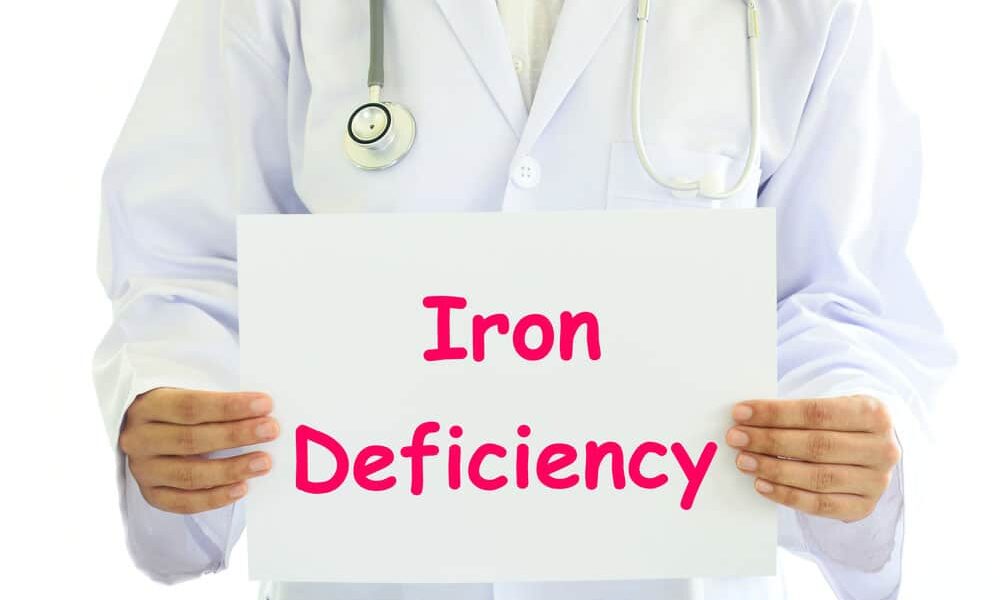Iron is an essential mineral that plays a crucial role in transporting oxygen to muscles and supporting energy production. For athletes and active individuals, having an optimal iron level is important for maximizing performance and avoiding fatigue.
Makes sense, right? Iron carries the oxygen your muscles need to perform their best. But here’s the question. Do you need more iron if you exercise regularly? The answer depends on several factors.
Why Iron Matters for Exercise
First, you must understand why you need iron and how exercise affects your body’s use of iron during exercise. Iron has two key functions that impact exercise capacity:
Oxygen transport: You have a protein called hemoglobin in your red blood cells. Hemoglobin grabs onto oxygen and carries it to your hardworking muscles. If your oxygen level drops, it affects your stamina, and you can’t exercise as hard. Symptoms of iron deficiency anemia are fatigue and exercise intolerance.
Energy metabolism: The enzymes that produce energy to fuel your muscles also require iron. Being deficient in iron can impair the muscles’ ability to produce ATP, the body’s energy currency, during exercise. Iron deficiency, even in the absence of anemia, can negatively affect athletic performance by increasing muscle fatigue, decreasing work capacity, and compromising recovery.
So, it’s clear you want to avoid iron deficiency if you exercise.
Are Athletes at Higher Risk of Iron Deficiency?
If you’re an athlete or do intense or frequent exercise, you might wonder whether you need more iron. Research shows that both male and female athletes, especially those in endurance sports, have higher rates of iron deficiency compared to sedentary individuals. But why? Several factors contribute to this increased risk:
Increased iron losses: When you exercise, you lose iron through sweating, urine, and through microscopic bleeding from your digestive tract. Microscopic bleeding can happen when you do high-impact exercise, like running. Menstruating female athletes also experience additional iron losses through monthly bleeding.
Inadequate dietary iron: If you exercise and eat a restricted diet, you might not get enough iron through your diet. Vegetarian and vegan athletes are at particular risk. You can get enough iron with a plant-based diet, but it requires planning. So, it’s important to plan your diet carefully to ensure you’re getting enough iron to support an active lifestyle.
Impaired iron absorption: Intense exercise triggers inflammation. It also triggers the release of hepcidin, a hormone that temporarily blocks iron absorption in the gut. This effect is most pronounced in the 3-6 hours after training.
Getting enough iron is a concern if you exercise frequently or intensely. Studies estimate that 15-35% of female athletes and 3-11% of male athletes have iron deficiency, compared to 5% of the general population. Adolescent and vegetarian/vegan athletes have even higher rates of up to 50%.
Identifying Iron Deficiency
How do you know if you’re iron deficient? The most reliable way to diagnose iron deficiency is through blood tests measuring ferritin (a marker of iron stores), hemoglobin, and transferrin saturation.
But you also may have certain symptoms. Common symptoms of iron deficiency in athletes include unexplained fatigue, poor recovery, heavy legs, and declining performance, especially when training load is constant. But you can also have iron deficiency without having significant symptoms.
That’s why it’s a smart idea, particularly if you’re a female or eat a vegetarian diet, to ask your healthcare provider to screen you for iron deficiency periodically. Also, athletes involved in endurance sports, like long-distance running or cycling, can benefit from screening.
Boosting Iron Intake and Absorption
If tests reveal suboptimal iron status, it’s time to modify your diet to include more iron-rich foods.
- Increase intake of heme iron from animal foods like red meat, poultry, and fish. You can more easily absorb and use iron from non-plant sources.
- Combine non-heme iron foods with vitamin C to enhance absorption. Good pairings include legumes with citrus fruits or tomatoes.Avoid drinking tea and coffee with iron-rich meals, as tannins and polyphenols inhibit absorption.
- Consume most of your daily iron apart from calcium-rich dairy foods and supplements.
- Timing iron intake around workouts may also help. Consuming iron-rich foods within 30-60 minutes post-exercise, before hepcidin levels peak, can enhance absorption compared to waiting longer.
Morning may be an ideal time since hepcidin levels are naturally lower than later in the day.
Iron Supplementation Considerations
If you have severe iron deficiency, your healthcare provider may recommend an iron supplement. Dosage typically ranges from 30-60 mg of elemental iron per day, with vitamin C to aid absorption. Supplements are most effective for athletes with ferritin below 20 μg/L. The benefits are that you may have improved aerobic capacity, endurance, and fatigue resistance.
But keep this in mind. If you don’t have iron deficiency, supplementing with iron is unlikely to give you additional performance benefits. Plus, taking iron supplements can cause nausea or constipation. If you’re deficient, taking iron on an empty stomach for at least 60 minutes pre-exercise or post-exercise can also help.
The Bottom Line
While not all active individuals need more iron, athletes – especially females in endurance sports – are at elevated risk of deficiency due to increased losses, inadequate intake, and impaired absorption. Identifying deficiencies early through blood testing is key.
Boosting intake of bioavailable iron from animal foods and timing consumption to optimize absorption are the first lines of defense. Supplements may help correct a deficiency if your diet falls short. But getting personalized advice from a sports medicine doctor and sports dietitian is a must before self-medicating with iron. Too much iron can be harmful too.
By keeping iron levels in an optimal range through a strategic diet and supplementation protocol, athletes can ensure this essential mineral enhances rather than hinders their training and performance.
References:
- Nielsen P, Nachtigall D. Iron supplementation in athletes. Current recommendations. Sports Med. 1998 Oct;26(4):207-16. doi: 10.2165/00007256-199826040-00001. PMID: 9820921.
- Solberg A, Reikvam H. Iron Status and Physical Performance in Athletes. Life (Basel). 2023 Oct 2;13(10):2007. doi: 10.3390/life13102007. PMID: 37895389; PMCID: PMC10608302.
- Weaver CM, Rajaram S. Exercise, and iron status. J Nutr. 1992 Mar;122(3 Suppl):782-7. doi: 10.1093/jn/122.suppl_3.782. PMID: 1542048.
- McCormick R, Moretti D, McKay AKA, Laarakkers CM, Vanswelm R, Trinder D, Cox GR, Zimmerman MB, Sim M, Goodman C, Dawson B, Peeling P. The Impact of Morning versus Afternoon Exercise on Iron Absorption in Athletes. Med Sci Sports Exerc. 2019 Oct;51(10):2147-2155. doi: 10.1249/MSS.0000000000002026. PMID: 31058762.
- Wouthuyzen-Bakker M, van Assen S. Exercise-induced anaemia: a forgotten cause of iron deficiency anaemia in young adults. Br J Gen Pract. 2015 May;65(634):268-9. doi: 10.3399/bjgp15X685069. PMID: 25918331; PMCID: PMC4408516.
Related Articles By Cathe:
4 Reasons Why Iron Deficiency Is More Common in Athletes
How Do Low Iron Levels Impact Exercise Performance?
Exercise and Anemia: If You Work Out Do You Need More Iron?
Do Iron Supplements Improve Exercise Performance?









